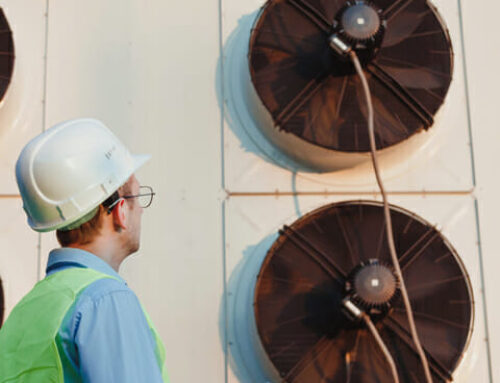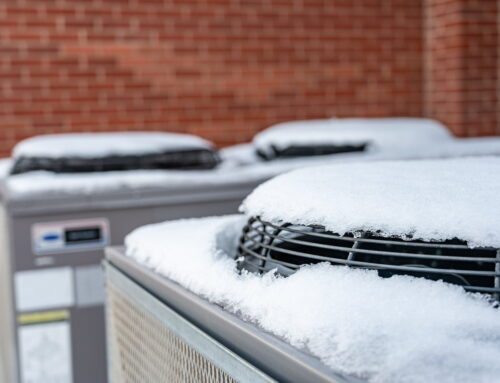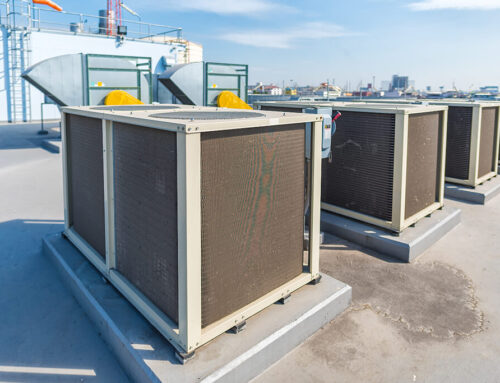Nearly 60% of historic commercial buildings face inefficiencies with their HVAC systems in terms of energy consumption, a staggering statistic that highlights the unique challenges these structures present in construction and space, often scrutinized by government agencies. Retrofitting these architectural gems, including old and government buildings, with modern heating, ventilation, and air conditioning (HVAC) solutions requires a delicate balance between preserving historical integrity and meeting today’s energy standards, while accommodating the unique space and construction challenges they present. This post dives into the common hurdles such as outdated infrastructure and strict preservation guidelines in historical building and government buildings, while also exploring innovative strategies to breathe new life into old bones of historic space without compromising their character, often involving government agencies. Let’s delve into making history meet modern efficiency.
Unique Challenges of Retrofitting HVAC in Historic Buildings
Limited Space
Retrofitting HVAC systems in historic buildings often means working with limited space, accommodating drain lines, filters, and government agencies. These structures weren’t designed for modern ductwork and equipment. This can make installation tricky.
Finding creative solutions is key. For instance, using mini-split systems or high-velocity, small-diameter ducts with drain lines can help in old buildings, especially in a historic space. Both options require less space than traditional systems.
Insulation Issues
Historic buildings often lack proper insulation. But upgrading the HVAC system in old government buildings without changing the building’s appearance poses a challenge.
One approach is to use insulating materials that are thin yet effective. Another strategy involves focusing on areas like attics or basements in historical buildings where system changes are less visible.
Structural Integrity
Preserving a building’s structural integrity while installing new HVAC systems is crucial. Heavy equipment could damage old frameworks if not carefully managed.
Engineers might need to reinforce certain areas of the system before installation begins. They also ensure that any modifications to the system do not affect the building’s foundation or load-bearing walls.
Structural and Architectural Constraints
Load-Bearing Walls
Adapting HVAC systems in historic commercial buildings often hits a snag with load-bearing walls. These walls are crucial for the structure‘s integrity. You can’t just modify the system to fit new ductwork or equipment without risking damage.
One solution is using mini-split systems. They require minimal alteration to the building’s structure. Another approach involves careful planning to route new systems through existing spaces, avoiding these critical walls altogether.
Original Facades
Preserving a building’s original facade while integrating modern HVAC systems can be tricky. It’s essential not only for aesthetic reasons but often due to regulations protecting historic properties.
Innovative solutions for the system include designing custom vents that blend with the facade or positioning flues in less conspicuous areas. Sometimes, it’s possible to use interior routes for venting systems, thus preserving the external appearance.
Historical Features
Ornate ceilings and windows add character but present challenges for HVAC system installation in historic buildings. Working around these features requires creativity and precision.
For ceilings, one strategy is utilizing a slim duct system that fits into small spaces without altering the look. For windows, carefully designed installations ensure modern systems don’t interfere with natural light or views.
-
Examples of strategies:
-
Mini-split systems
-
Custom vents
-
Slim ducts
Historic commercial buildings hold significant value but pose unique challenges for retrofitting HVAC systems due to structural constraints like load-bearing walls and architectural elements such as facades and ornate features. By employing innovative solutions like mini-split systems, custom ventilation designs, and slim ductwork, it’s possible to overcome these hurdles effectively.
Compliance with Historic Preservation Regulations
Meeting Standards
Historic buildings carry a unique charm. But, updating their HVAC systems is challenging. You must meet standards set by local historic preservation committees. This involves extensive paperwork and detailed plans that respect the building’s heritage.
Preservation committees have strict rules to maintain a building’s historical integrity. They review every aspect of proposed renovations. This ensures modern updates do not harm the building’s character.
Balancing Efficiency
One major challenge is balancing energy efficiency with regulations on visible changes. Modern HVAC systems are less intrusive and more efficient than older models. Yet, installing them in historic buildings often requires creative solutions.
For example, using slim ducts or designing custom covers can hide modern equipment without altering the appearance significantly. These solutions allow for improved energy efficiency while respecting the building’s aesthetic value.
Permit Process
Obtaining necessary permits for work on designated landmarks is another hurdle. The permit process can be lengthy and complex, involving multiple steps:
-
Submitting detailed renovation plans.
-
Reviewing these plans with preservation committees.
-
Making any adjustments required by the committee.
This process ensures that all changes comply with local regulations and preserve historical significance.
Solutions and Best Practices for HVAC Systems Installation
Mini-Split Systems
Utilizing mini-split systems is a strategic move. These systems require minimal ductwork. This means less disruption to the building’s structure. Historic buildings benefit greatly from this approach.
Mini-splits are also energy-efficient. They can reduce operating costs over time. Their flexibility in installation locations makes them ideal for unique spaces found in historic commercial buildings.
Zoned Solutions
Implementing zoned HVAC solutions offers significant advantages. It allows for better control of temperatures throughout the building. Different areas can have different climate needs, and zoning meets these needs efficiently.
Zoning reduces energy waste by heating or cooling only occupied spaces. This feature aligns well with sustainability goals often important in historic preservation efforts.
Planning and Modeling
Employing detailed planning is crucial for success in installing HVAC systems in historic buildings. Challenges like fitting modern equipment into old structures need careful consideration.
3D modeling tools come into play here, offering a visual way to anticipate problems before they occur. By creating a digital twin of the space, engineers can plan where to place HVAC units, drain lines, and other components without clashing with existing elements.
Innovative HVAC Technologies for Historic Buildings
Geothermal Pumps
Geothermal heat pumps offer a smart solution. They use the earth’s stable temperature to heat and cool. This method is great for historic buildings because it’s hidden underground.
Installing these pumps has little impact on the building’s appearance. It ensures efficient heating and cooling without altering historical features.
VRF Systems
Variable Refrigerant Flow (VRF) systems are another excellent option. They allow for flexible installation in tight spaces often found in old buildings. VRF systems can provide heating and cooling to different parts of a building at the same time.
This flexibility makes them ideal for historical buildings with unique layouts. They ensure comfort while preserving architectural integrity.
Smart Thermostats
Smart thermostats adapt to your needs within preservation limits. They learn from your habits and adjust the climate accordingly, ensuring energy efficiency.
For historic commercial buildings, they offer a balance between modern comfort and preservation requirements. By monitoring and adjusting, they maintain an optimal environment without harm to historical features.
Funding and Financial Incentives for Retrofits
Tax Credits
Owners of historic commercial buildings face unique challenges when upgrading HVAC systems. However, several financial incentives can ease this burden. One significant aid comes from leveraging tax credits for energy-efficient upgrades.
The government offers tax incentives to encourage the preservation of historic structures while promoting reduced energy consumption. By installing energy-efficient HVAC systems, building owners can qualify for these credits. This not only lowers initial costs but also benefits the environment.
Preservation Grants
Another avenue for support is through grants aimed at preserving historical integrity. Numerous preservation societies provide funding specifically designed to help maintain the character of historic buildings during upgrades.
These grants often cover a portion of retrofitting expenses, making it financially feasible to enhance HVAC systems without compromising historical aesthetics. Accessing such grants requires compliance with certain standards that ensure the building’s historical aspects are preserved.
Low-Interest Loans
Finally, exploring low-interest loans tailored for retrofitting historic buildings presents a viable solution. These loans are offered by various government agencies and private institutions with terms favorable to building owners undertaking such projects.
With lower interest rates compared to standard loans, they offer an affordable way to finance necessary upgrades. This ensures that even extensive improvements like overhauling outdated HVAC systems become manageable within a budget.
Balancing Historical Integrity with Modern Efficiency
Reversible Modifications
Preserving the original elements of historic commercial buildings is crucial. Prioritizing reversible modifications ensures that these structures can maintain their historical integrity. For instance, using external HVAC units that do not require structural changes to the building can be a wise choice.
Reversible solutions mean less damage and easier removal if future technologies emerge or requirements change. This approach respects the building’s past while embracing modern efficiency needs.
Aesthetic Integration
Selecting HVAC components that blend well with the building’s aesthetics is key. Sometimes, this involves custom solutions like designing grilles and vents to match historic finishes or hiding equipment in less visible areas.
This strategy minimizes visual impact on historic features. It requires careful planning but results in a balance between maintaining original beauty and achieving modern comfort levels.
Expert Consultation
Consulting preservation experts is vital for any upgrade project in a historic setting. These professionals help ensure that modifications respect the building’s historical significance.
They work closely with engineers to identify solutions that meet both preservation standards and modern efficiency requirements. Their expertise helps navigate complex regulations set by preservation agencies, ensuring projects comply without compromising historical value.
Case Studies of Successful HVAC Retrofits in Historic Buildings
Landmark Transition
A famous landmark building underwent a significant transformation. It shifted to high-efficiency systems. This change was remarkable because it kept the building’s look the same.
The engineers used hidden panels and camouflaged vents. They ensured that modern equipment did not disrupt the historic aesthetic. The result was a seamless blend of old charm and new efficiency.
Solar Integration
Another project involved a centuries-old structure. Here, solar-powered HVAC made its mark. The challenge was immense due to the building’s age.
However, solar panels were installed discreetly on less visible roof areas. Inside, high-tech controls managed temperatures without altering historic interiors. This approach demonstrated how renewable energy could support heritage conservation.
Innovative Ductwork
Innovative duct routing played a crucial role in preserving architectural integrity for one commercial building. Engineers had to think outside the box.
They designed custom duct paths that navigated through existing spaces with minimal intrusion. These routes allowed air flow without compromising historical features or structural stability.
This case showed that with creativity, even complex challenges like duct placement could be overcome in historic settings.
Summary
Retrofitting HVAC systems in historic commercial buildings is no walk in the park, but it’s not mission impossible either. You’ve seen the unique challenges, from tight spaces to strict regulations, and the clever solutions that can make modern air flow respect ancient architecture. It’s all about finding that sweet spot between preserving the past and embracing the future. Technologies are evolving, incentives are out there, and with a bit of creativity, these grand old buildings can enjoy a new lease on life—comfortably cool in summer, cozy in winter, all without compromising their character.
Now’s your chance to be part of the solution. Whether you’re a building owner, an HVAC pro, or just someone who loves blending the old with the new, dive deeper into how you can contribute to transforming historic gems into energy-efficient marvels. Let’s keep our history alive and well-ventilated. Ready to take the next step?






